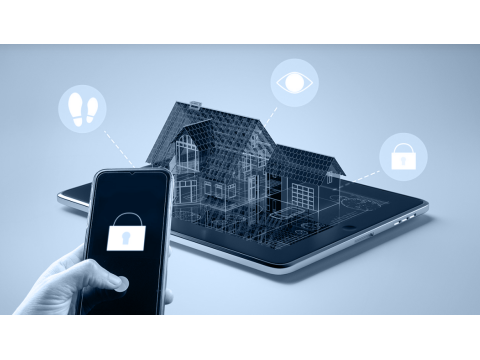Comprehensive Guide to Installing Security Systems
Installing a security system requires careful planning and consideration of various factors such as the type of premises, desired reliability, and ease of use. This guide outlines best practices for setting up security systems in homes, apartments, and dachas.
Key Components of Security System Installation
1. Security Sensors and Detectors
Common sensors include:
- Glass break detectors: Position away from curtains or blinds for optimal acoustic detection.
- Motion detectors: Place strategically to cover entry points and high-traffic areas.
- Door/window contacts: Mount securely to trigger alerts when opened.
2. Control Panels
Install control panels in restricted-access areas, ensuring compliance with electrical and fire safety standards. They should be easily accessible to authorized users while remaining out of reach for unauthorized access.
3. Alarms and Alerts
Position sound and light alarms in visible and audible locations to deter intruders and notify occupants. Outdoor alarms should be weather-resistant and tamper-proof.
Installing Security Systems in Specific Premises
A. Security System for a Dacha
Unique challenges for dachas include remote locations, unstable power supply, and seasonal occupancy.
Recommendations:
- Opt for GSM-based systems with battery backup to ensure uninterrupted operation during power outages.
- Use motion detectors for internal monitoring, avoiding unnecessary sensor placements on every window.
- Install external light and sound alarms as psychological deterrents.
B. Security System for a Private Home
Private homes often require more robust and visible systems due to their standalone nature.
Recommendations:
- Consider multi-zone setups to protect the perimeter, interior, and specific assets (e.g., safes).
- For a polished aesthetic, use wireless systems to minimize intrusive wiring.
- Leverage video surveillance with remote access for additional monitoring.
C. Security System for an Apartment
Apartments are best suited for centralized monitoring systems.
Recommendations:
- Opt for pultovaya охрана (centralized monitoring) for reliable and professional protection.
- For small apartments, a GSM camera system with motion detection and instant photo capture is a cost-effective alternative.
- Focus on securing entry points (doors and windows) with minimal sensors.
Installation Tips for Optimal Performance
- Positioning Matters: Ensure detectors are not obstructed by furniture or fixtures.
- Test Coverage: Conduct trials to verify all sensors detect activity in their designated zones.
- Power and Backup: Equip systems with reliable power supplies and battery backups to maintain functionality during outages.
- Accessibility and Security: Place control panels in secured, yet accessible locations for authorized personnel.
Why Centralized Monitoring is Preferred for Apartments
Centralized systems offer:
- Higher reliability with 24/7 monitoring.
- Rapid response from professional security teams.
- Convenient integration with existing infrastructure.
For regions without access to centralized services, GSM systems with remote monitoring can provide a viable alternative.
Enhancing Security with GSM Technology
GSM Systems allow real-time notifications via mobile networks. These systems are:
- Ideal for remote properties.
- Effective for capturing and sending snapshots during breaches.
- Easy to integrate with other security measures like cameras or alarms.
For more tailored advice and equipment, visit safsale.com to explore cutting-edge security solutions

